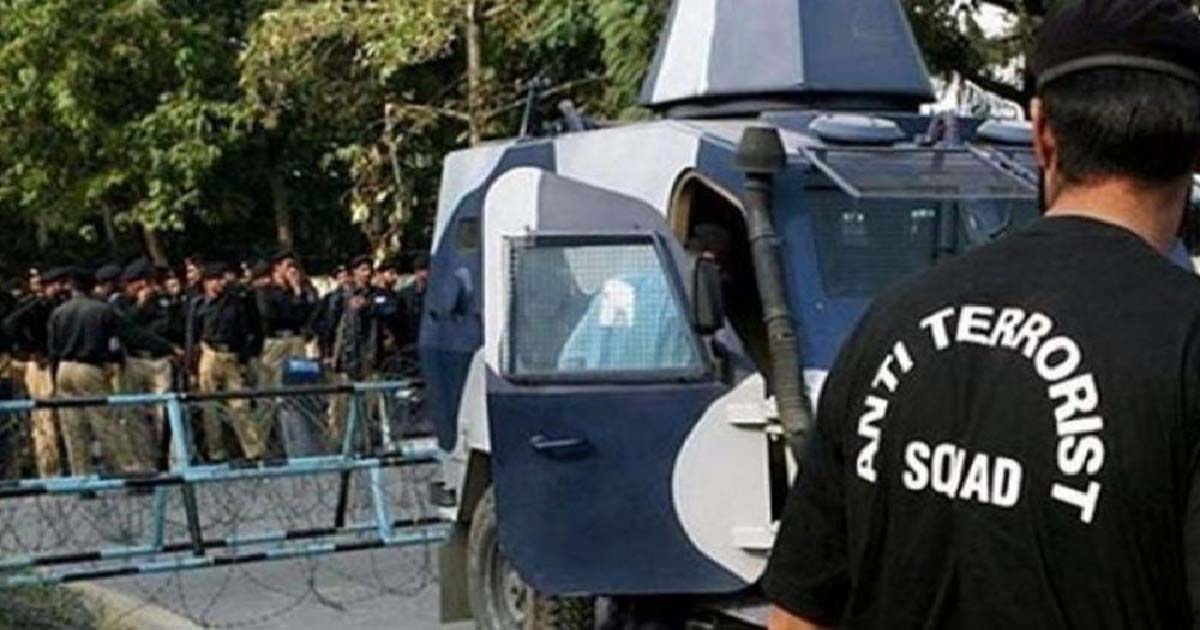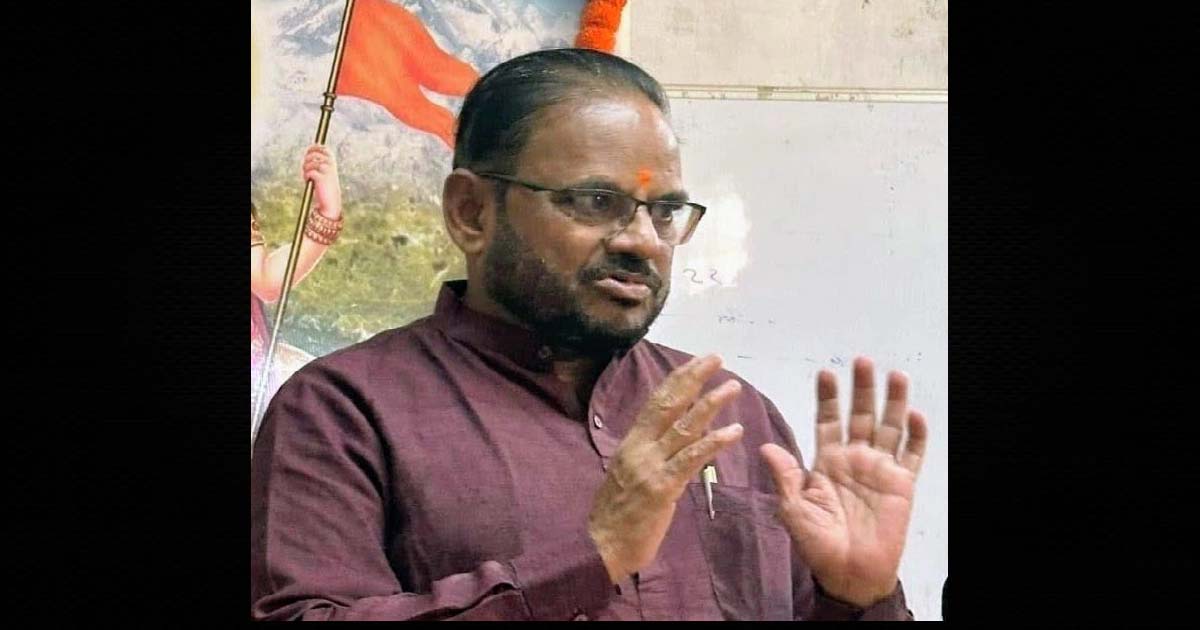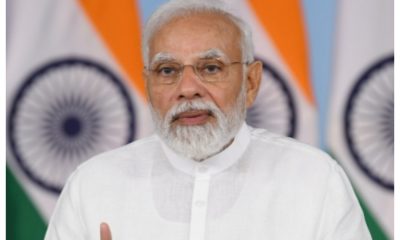Maharashtra
RTI: Modi govt ‘crushes’ hinterland terror, only 7 attacks in 8 years
The government of Prime Minister Narendra Modi has come out with flying colours in curbing hinterland terror, with only seven such extremist attacks notched in the past over eight years of the NDA rule, a RTI reply has revealed here.
Besides, there has been minimal loss of lives, 11 civilians and 11 security personnel killed, and injuries sustained by 52 civilians and 44 by security forces, from 2014-till date.
These and other significant revelations came in a RTI reply by the Union Home Ministry to Pune-based activist Prafful Sarda.
“I had sought details of all terror strikes that took place in India, from 2004 till date, implying, during the UPA tenure of former Prime Minister Dr. Manmohan Singh and the NDA government of Prime Minister Modi,” Sarda said.
The RTI reply provides startling details of the UPA regime from 2004-2013, a total of 42 hinterland terror attacks killing 853 civilians and 18 security personnel, and leaving 3,147 civilians injured, with zero casualties on the security side.
The data indicates that 2008 and 2006 were the worst years in terms of extremist strikes in the hinterlands, recording 306 and 238 civilian deaths plus 833 and 1,266 civilian injuries, respectively.
In 2008, which includes the dastardly 26/11 Mumbai terror attacks, 18 security personnel were killed and 9 terrorists from Pakistan were killed while one Ajmal Kasab was caught alive, tried and secretly hanged on November 21, 2012.
The other major incidents of 2008 include: attacks in Rampur (Uttar Pradesh), Jaipur in May, Bengaluru and Ahmedabad in July, Delhi and Mehrauli, Malegaon and Gujarat, all in September, Agartala, Imphal and Assam, all in October.
The 2006 data comprises the terror strikes in Ahmedabad railway station (February 19), Mumbai 7/11 serial bomb blasts in suburban trains (July 11), and the Malegaon blasts (September 8).
The RTI reply by the Ministry’s Director (CT-I) & CPIO Chanchal Yadav had provided the details pertaining only to terror hits or bomb blasts in the �hinterland’ of India, or the civilian areas.
“Its puzzling why the officer restricted the reply to �hinterland’ regions, and conveniently omitted the crucial terror activities in the border states. So, this doesn’t reveal the true picture of how many times the country was really targeted between 2014-till date both on the borders and interiors,” said Sarda.
The activist pointed out that the Centre has named the state �police’ as the first responder to any terrorist/criminal activities, and thereby appears to “club together terror-crime incidents” in the country.
Sarda said the CPIO has directed the RTI queries for Jammu & Kashmir, Left Wing Extremism (Maoist/Naxalism) and North-East to the concerned departments, but their responses are awaited.
However, the Centre has taken various critical administartive and legislative measures to rein in hinterland terrorism in the past 18 years.
The initiatives are: augmenting the Central Armed Police strength, capacity building of special forces, modernising the (state) Police forces, tighter immigration controls, upgrading intelligence set-up and coastal security, and giving more teeth to the UAP and NIA acts.
Maharashtra
Pune Zubair Hangekar’s Pakistan connection, hope for new conclusions in the investigation… ATS releases him after questioning 19 people so far

Mumbai: Pune Suspected terrorist Zubair Hungakar’s contact list has Pakistani numbers. Zubair Hungakar’s mobile contact list has 5 international numbers. Numbers of Gulf countries were found in Hungakar’s old and used handset. The old handset has 1 number for Pakistan, 2 for Saudi Arabia, 1 number for Oman and 1 number for Kuwait. It has been found that 1 Omani and 4 Saudi Arabian numbers are stored in the mobile phone used.
When asked about this number, Zubair said in response to a question during interrogation that he did not know. Suspected Al-Qaeda member Zubair Hungakar has been sent to judicial custody. Zubair Ilyas Hungakar was arrested on charges of spreading jihad in support of the terrorist organization Al-Qaeda in the Indian subcontinent and threatening the unity and security of the country.
Zubair is originally from Solapur and currently works in a software company in Kalyani Nagar. He is married and has two children, and his family resides in the Kondwa area. Meanwhile, the ATS is thoroughly investigating the matter and is investigating whether Zubair had any links with Al-Qaeda members, why he had these materials and for what purpose. The police will also question his friend and examine his mobile and other electronic devices. It is also being investigated whether he was in contact with any other terrorist organisation. All these international numbers are important to Zubair and it is being speculated that he has terrorist connections and links. However, when questioned about these numbers, he gave vague answers that he did not know who they belonged to or what they were related to.
ATS officials said that investigations are being conducted to find out whether Zubair had any links with Al-Qaeda members and what was the purpose of this contact. We are also investigating why and for what purpose he had the Al-Qaeda material. His friend in his custody will be questioned and his mobile and other electronic devices will also be examined. It is also being investigated whether he came in contact with any other terrorist or not. Meanwhile, the ATS had earlier this month conducted search operations in different parts of the city. The operation was related to the investigation of an old ISIS module. At that time, suspected radical individuals were kept under surveillance. During this operation, 19 people were detained for questioning, but they were released after questioning. During these raids, the police have also seized some important documents along with electronic devices.
Maharashtra
Amrauti MP Anil Bonde receives threat from Hyderabadi Muslim over email, anger over removal of IIC banner and anti-Islamic rhetoric, situation tense

Mumbai: A Muslim organization called ICC had put up a banner at Panchoti Chowk in Amrauti, Maharashtra, which sparked a controversy, due to which communal tension has arisen in Amrauti. MP Anil Bonde has demanded a case to be registered against the putting up of the banner. Today, Anil Bonde has received a threatening email in this matter, after which the police have registered an NC in this matter and started investigating. This email has been said that Anil Bonde’s anti-Islamic statement has created hatred and the atmosphere of resentment against him among the Muslims of Hyderabad is very hot. The personal secretary of the complainant Anil Bonde has complained that when he was checking his email as usual in the morning, he received a threatening email. The following email was received on Bonde’s official email from an unknown email ID. Dr. Sahib, the language you used against Islamic teachings has ignited such a fire in the hearts of the Muslims of Hyderabad that the atmosphere here has become dangerously hot. This is anger, which turns into a storm with a spark. Every word of yours is feeling like an open wound to the Muslims, so control your language and your speech because Dr. Sahib, this time emotions have flared up so much that even a wrong word is enough to make the entire atmosphere uncontrollable. A threatening email has been received in the name of the angry Muslim community of Hyderabad. Bonde had filed a complaint in Panchavati Chowk regarding the banner of the Islamic organization. That is why the threat has been sent through email on the official email ID. After which an NC has been registered. Abel Bonde is identified as a hardline Hindutva leader and he had opposed the putting up of an Islamic banner at Panchavati Chowk. The situation is extremely tense due to this incident. The police are on immediate alert.
Maharashtra
Abu Asim Azmi demands immediate help from Indian government after pilgrims were involved in a bus accident during Umrah in Saudi Arabia

Mumbai: Maharashtra Samajwadi Party and MLA Abu Asim Azmi has expressed grief and sorrow over the martyrdom of Indian pilgrims in a road accident during Umrah in Saudi Arabia and has demanded that the Indian government help bring the bodies of the deceased pilgrims to India. Muslims are saddened and mourning after the video of this tragic accident went viral on social media. Abu Asim said that after visiting the house of Allah, Mecca, the pilgrims’ bus met with an accident while traveling to Medina and this accident was so terrible that 42 pilgrims died in it. Abu Asim said that this tragedy with Indian pilgrims who went for Umrah is very sad. We express our heartfelt condolences to the families of all the martyrs. May Allah Almighty grant them a high place in Paradise, grant patience to the bereaved families and grant a speedy recovery to the injured Amen.
We demand Prime Minister Narendra Modi and Jaishankar to immediately provide all possible assistance to the families who have to bring the bodies of their loved ones back to India.
And if anyone wishes to go to Saudi Arabia to perform the last rites of their loved ones, they should be issued emergency visas immediately and the injured should be provided with the best medical facilities.
-

 Crime3 years ago
Crime3 years agoClass 10 student jumps to death in Jaipur
-

 Maharashtra1 year ago
Maharashtra1 year agoMumbai Local Train Update: Central Railway’s New Timetable Comes Into Effect; Check Full List Of Revised Timings & Stations
-

 Maharashtra1 year ago
Maharashtra1 year agoMumbai To Go Toll-Free Tonight! Maharashtra Govt Announces Complete Toll Waiver For Light Motor Vehicles At All 5 Entry Points Of City
-

 Maharashtra1 year ago
Maharashtra1 year agoFalse photo of Imtiaz Jaleel’s rally, exposing the fooling conspiracy
-

 National News1 year ago
National News1 year agoMinistry of Railways rolls out Special Drive 4.0 with focus on digitisation, cleanliness, inclusiveness and grievance redressal
-

 Maharashtra1 year ago
Maharashtra1 year agoMaharashtra Elections 2024: Mumbai Metro & BEST Services Extended Till Midnight On Voting Day
-

 National News1 year ago
National News1 year agoJ&K: 4 Jawans Killed, 28 Injured After Bus Carrying BSF Personnel For Poll Duty Falls Into Gorge In Budgam; Terrifying Visuals Surface
-

 Crime1 year ago
Crime1 year agoBaba Siddique Murder: Mumbai Police Unable To Get Lawrence Bishnoi Custody Due To Home Ministry Order, Says Report






















